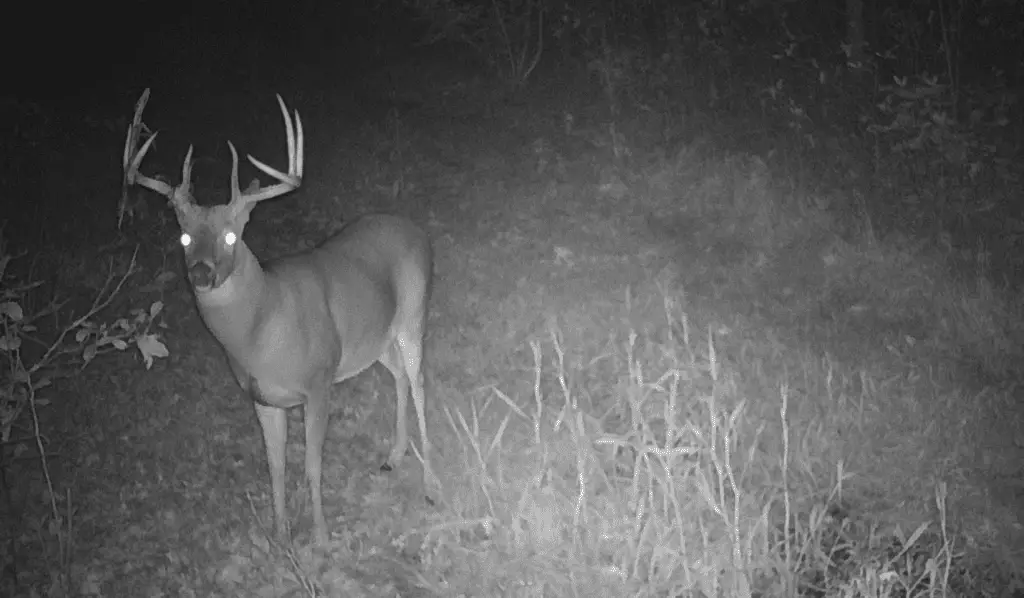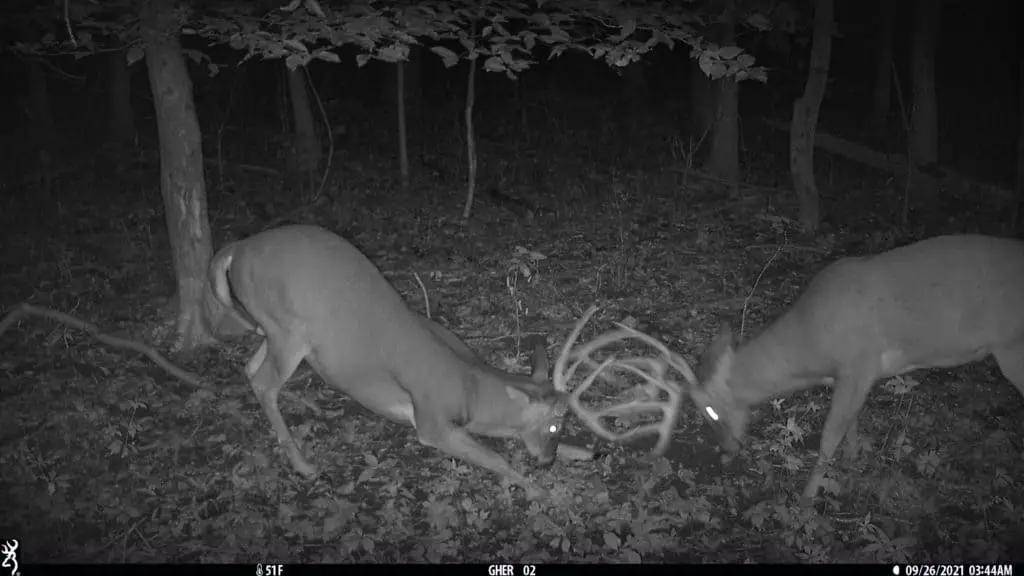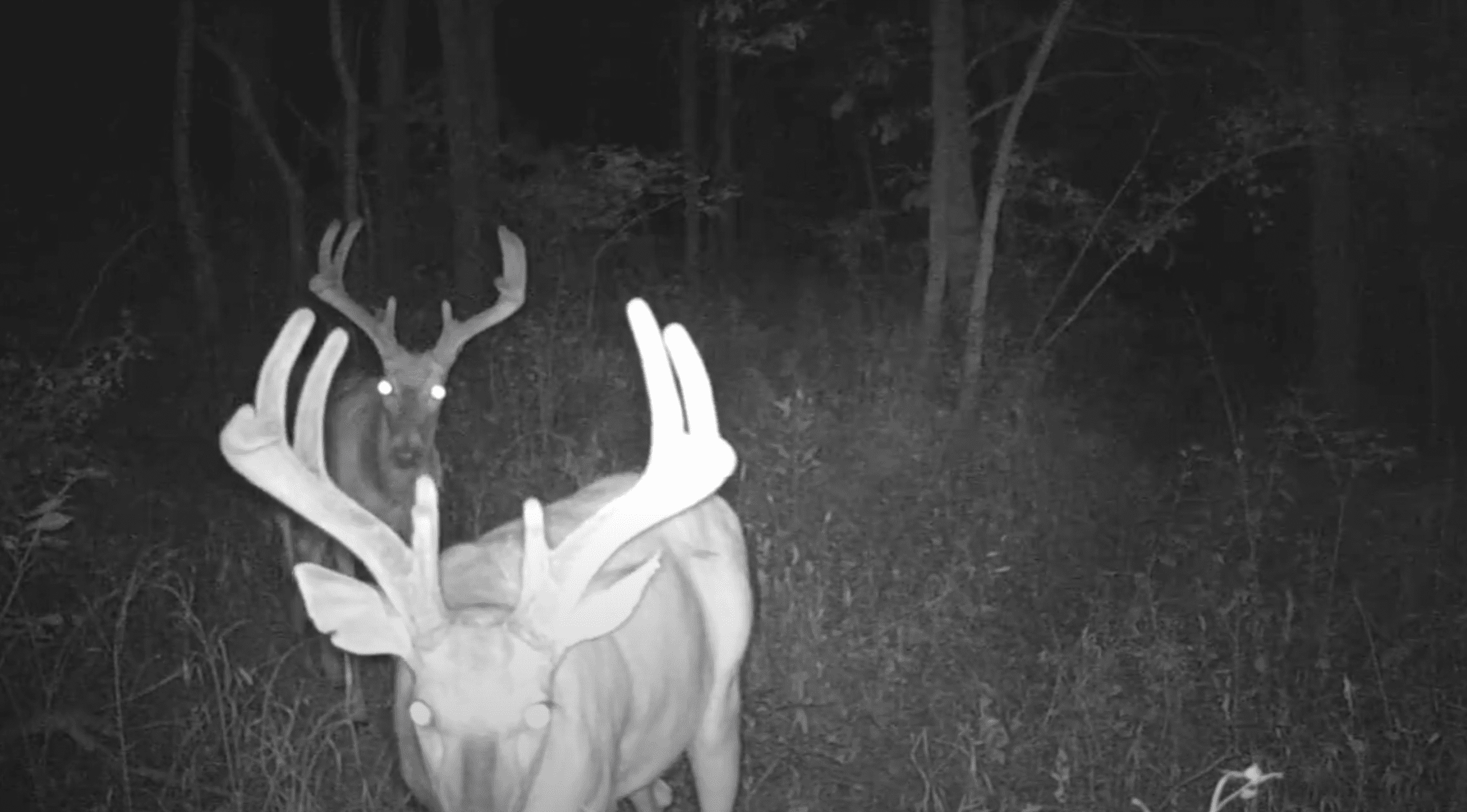Many deer hunters are curious when bucks leave their bachelor groups and start shifting their home range. Knowing when bachelor groups break up will help you understand when a shooter buck might disappear off your property. If you have been watching a target buck all summer long and feel like you have him patterned, you might be concerned about whether or not you will be able to still take advantage of that pattern and kill him before he breaks out of his bachelor group.
Bachelor groups break up when testosterone levels are increasing and breeding season is about to start. When antlers are starting to turn hard and the velvet on them is falling off, bucks will begin to spare with each other and confirm their dominance within the herd. During this time, about two to three weeks prior to the pre-rut, bucks will tolerate each other less and less and will start shifting their home ranges to begin living on their own.
Depending on where you hunt, when your hunting season opens, and the specific deer herd that you’re hunting, you may notice that bachelor groups split up slightly earlier or later. You might be asking yourself why some bachelor groups will split up earlier than others, so let’s dive into that.

There are several reasons why a bachelor group of bucks might break up earlier or later than the two to three week window prior to the pre-rut. The first is individual buck personalities. Some bucks show more aggression and others are move passive. When bucks begin to spare with each other, passive bucks will leave a bachelor group earlier than a more aggressive buck would.
The second reason why bachelor groups break up early or late is due to buck age structure within the group. Young bucks don’t really know what is going on yet when it comes to breeding. They just want to be a part of the party when the breeding starts to happen. Mature bucks might tolerate young bucks hanging around them as long as they don’t see them as a threat to their dominance and have a more passive personality. This scenario will encourage bachelor groups to stay together a little longer than the norm.
The third and final reason why bachelor groups might break up early or late is based on hunting pressure. If bachelor groups are run out of an area because of hunting pressure it may cause them to shift into their fall home ranges sooner. Additionally, if bachelor groups are being pushed into another bachelor groups area, that will create a situation where more sparing and fighting happens. When the hardcore fighting starts you can count on bachelor groups splitting up right away.
If you happen to see big bucks together during the rut, or the middle of hunting season, then those bucks are likely together because they are chasing after a doe that is ready to breed. Young bucks might also be seen together at this time of year, but that’s typically because both bucks are not part of the breeding activities taking place and are non-dominate.
How to recognize when bachelor groups break up
The best way to recognize when a bachelor group breaks up is by scouting open fields where you have regularly seen them congregate, or by using trail cameras to monitor them. Trail cameras are the best way to scout the deer herd since they can stay in the woods 24 hours a day, 7 days a week. If your trail camera is starting to get pictures of bucks shedding their velvet you can assume that those bucks are either breaking out of their bachelor groups or are a few weeks away from doing so.

How to hunt a bachelor groups of bucks
One of the best times to kill a mature buck is when he is still in his bachelor group and following his same summer pattern. Many states across the country start their hunting seasons early enough for you to take advantage of a mature buck’s summer pattern while he is still in his bachelor group.
If a state’s hunting season opens in October, then it might be too late for you to take advantage of a mature buck’s summer pattern. At this time of year, bucks are already starting to break out of their bachelor groups and shifting their home ranges. However, the opportunity to kill a mature buck using his summer pattern could still be there for you based on the scenarios we discussed in this article. Individual buck personalities, age structure, and hunting pressure all play a role in whether or not you can kill a mature buck in a bachelor group in early October.
Conclusion
Bucks will break up from their bachelor groups at roughly the same time of year and do it repeatedly year-after-year. There are a few factors that determine the exact timing of when bachelor groups break up, but they aren’t always easy for hunters to recognize them when they happen. One of the best ways to recognize when bachelor groups break up is by scouting them with trail cameras. If you are able to hunt a bachelor group that is still hanging around together and following a predictable summer pattern, this is one of the best ways to kill a mature buck.
Click this link if you’re interested in learning more about why and when bucks follow each other at different times of year.

